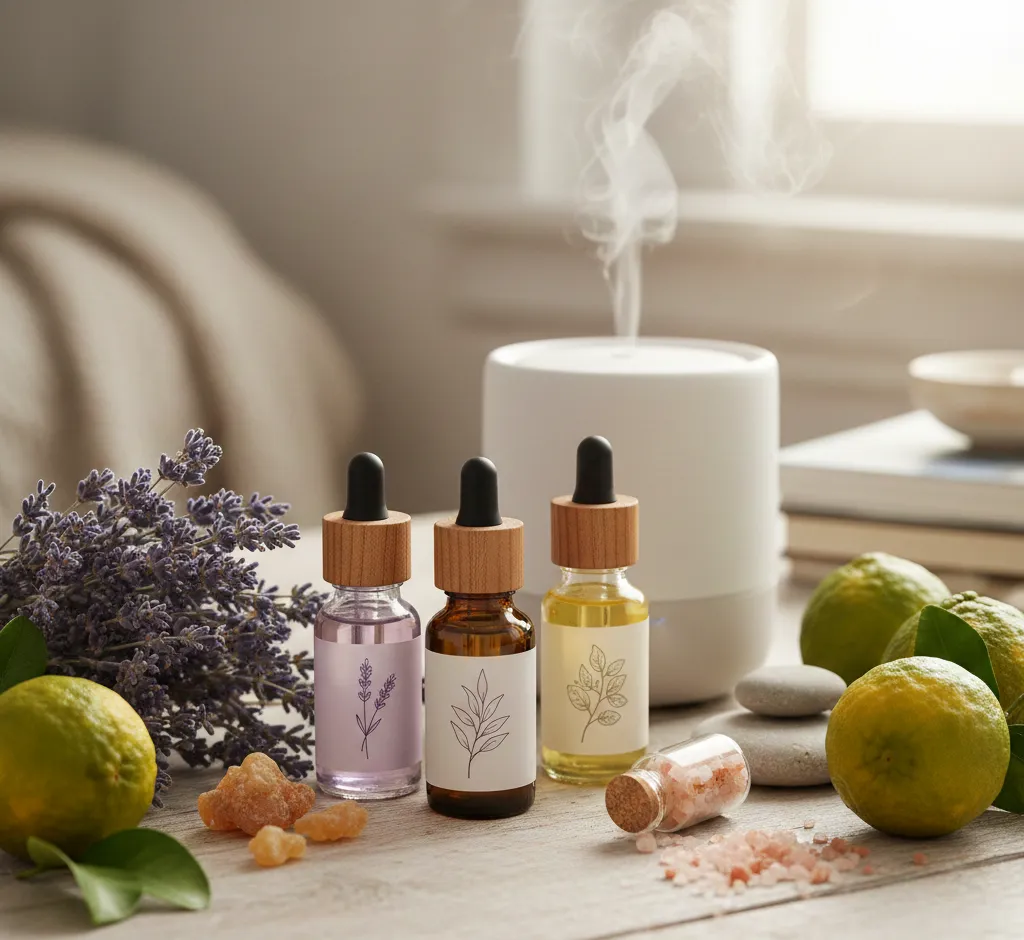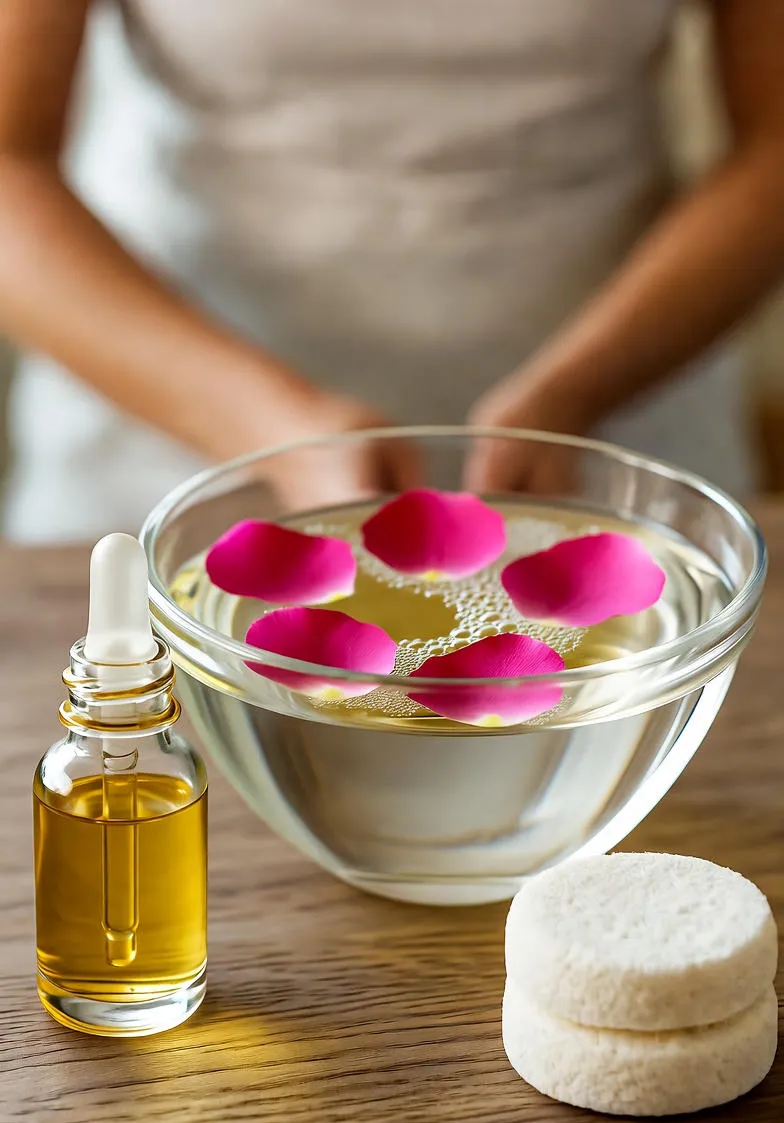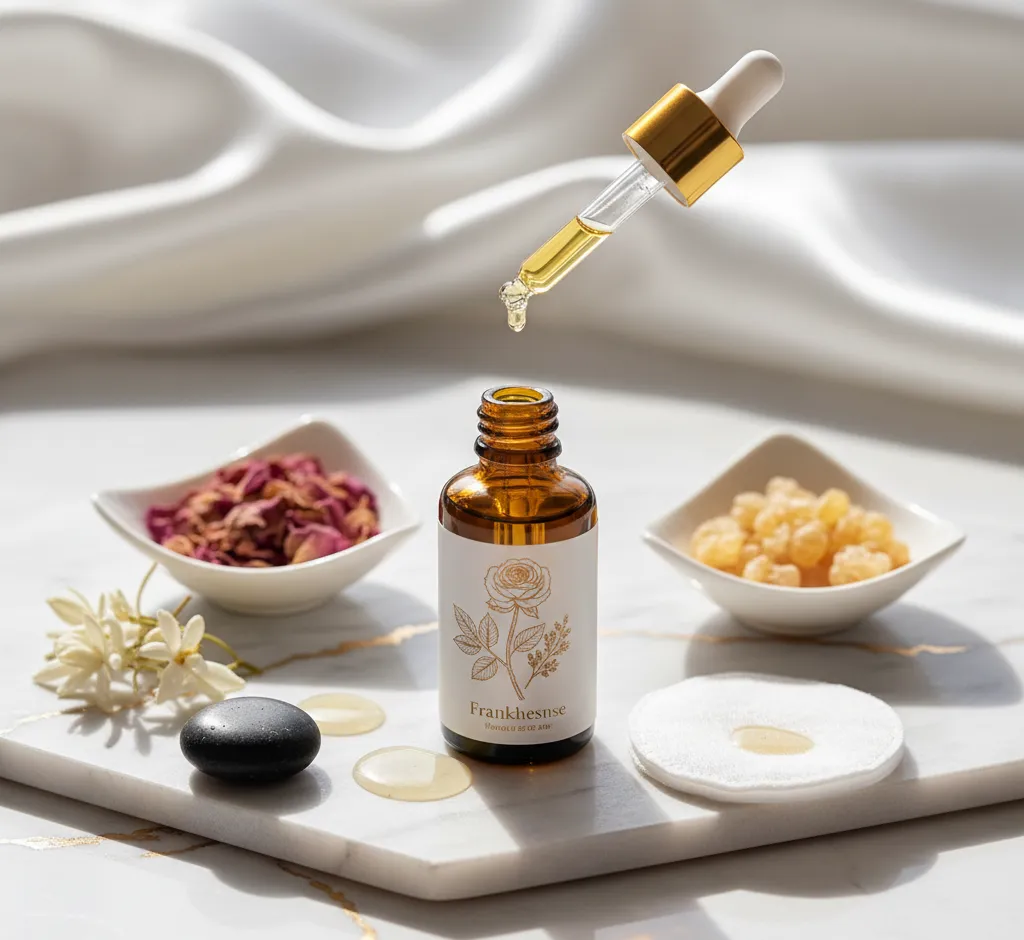Harnessing Nature's Calm: An In-Depth Guide to Anxiety Reduction with Essential Oils
Discover the most effective essential oils (Lavender, Frankincense, Bergamot) and science-backed methods for anxiety reduction. Learn how to use aromatherapy safely to calm the mind and manage stress naturally.

Understanding the Link Between Essential Oils and Anxiety Relief
Anxiety is a ubiquitous challenge in the modern world, manifesting in countless ways, from persistent worry to debilitating panic attacks. While conventional treatments offer proven paths to management, many individuals are exploring complementary approaches. Among the most popular and time-honored methods is the use of **essential oils**.
The relationship between scents and our emotional state is deeply rooted in our biology. When you inhale an essential oil, its molecules travel to the brain's olfactory system, which is directly connected to the limbic system—the part of the brain that governs emotion, memory, and behavior. This direct pathway allows essential oils to subtly yet effectively influence mood, stress response, and feelings of calm.
But how does this work on a molecular level? The aromatic compounds in essential oils, such as linalool in lavender or limonene in citrus oils, are believed to interact with neurotransmitter receptors. For example, some oils may mimic the effects of GABA (gamma-aminobutyric acid), a primary inhibitory neurotransmitter that reduces neuronal excitability. By promoting this inhibitory action, the oils can help slow down the nervous system, leading to feelings of relaxation and reduced anxiety.
The Science Behind the Calm: Key Chemical Constituents
- Linalool: Found in high concentrations in lavender, linalool has been extensively studied for its anxiolytic (anxiety-reducing) and sedative properties. It is thought to reduce stress-induced elevated cortisol levels.
- Limonene: Abundant in oils like lemon, orange, and grapefruit, limonene has mood-elevating and stress-relieving effects. Research suggests it may activate dopamine pathways, contributing to an overall sense of well-being.
- Esters (e.g., Linalyl Acetate): These compounds, found in clary sage and Roman chamomile, are known for their significant calming and balancing effects on the nervous system.
Safety Note: While essential oils are natural, they are highly concentrated. Always dilute them with a carrier oil before topical application and consult a healthcare professional, especially if you are pregnant, nursing, or have a pre-existing medical condition.
The Aromatic Apothecary: Top Essential Oils for Anxiety Reduction
Selecting the right oil is paramount to achieving the desired anti-anxiety effect. Below is an in-depth exploration of the most effective essential oils scientifically and traditionally used for calming the mind.
Lavender (Lavandula angustifolia)
Often considered the gold standard, **Lavender** is the most researched essential oil for anxiety. Its powerful calming properties are primarily due to its high concentration of Linalool and Linalyl Acetate. Studies have shown that inhaling lavender can significantly reduce heart rate and blood pressure, signs of a relaxed state. It is particularly effective for generalized anxiety and insomnia.
Application Methods for Lavender:
- Bedtime Diffuser: Diffuse 5-8 drops an hour before sleep to improve sleep quality, a critical factor in managing anxiety.
- Pulse Point Rub: Mix 2 drops of lavender with 1 teaspoon of a carrier oil (like jojoba or coconut oil) and massage onto the temples, wrists, and behind the ears.
Frankincense (Boswellia carterii)
Revered for centuries, **Frankincense** is highly valued for its ability to deepen the breath and promote feelings of peace and spiritual connection. It is grounding and helps to slow down an overactive mind, making it excellent for situational anxiety or panic. The sesquiterpenes in frankincense are believed to directly stimulate the limbic system to elevate mood.
Bergamot (Citrus bergamia)
A bright, citrusy oil, **Bergamot** is unique among citrus oils because it is simultaneously uplifting and calming. It has powerful anti-depressant and anxiolytic properties. Bergamot can help balance the HPA axis (hypothalamic-pituitary-adrenal axis), which is central to the stress response. Its ability to lighten a heavy mood makes it perfect for anxiety accompanied by low energy or sadness.
A Note on Bergamot: Bergamot oil is phototoxic, meaning it can cause a severe sunburn reaction when applied topically and exposed to direct sunlight. Always use 'Bergaptene-free' or apply it only to areas covered by clothing if using before sun exposure.
Roman Chamomile (Chamaemelum nobile)
Often used in teas for relaxation, **Roman Chamomile** essential oil possesses potent sedative qualities. It is particularly gentle and is a favorite for children's anxiety. Its calming action is attributed to esters that help soothe muscle tension and nervous restlessness.
Clary Sage (Salvia sclarea)
Known as 'The Woman's Oil,' **Clary Sage** is exceptional for reducing feelings of tension and hormonal stress. Studies have demonstrated its ability to significantly lower cortisol levels. It is particularly recommended for anxiety related to premenstrual syndrome (PMS) or menopause. However, due to its deeply relaxing effects, it should be used with caution when driving or operating heavy machinery.
Ylang Ylang (Cananga odorata)
With a sweet, heavy floral scent, **Ylang Ylang** is a powerful ally for acute anxiety and panic. It has a pronounced hypotensive (blood pressure lowering) effect and can slow rapid heart rate, making it invaluable during moments of high stress or panic attacks. A little goes a long way; excessive use can sometimes lead to headaches.
The Art of Application: Effective Delivery Methods
The efficacy of essential oils for anxiety heavily depends on the method of delivery. There are three primary ways to utilize these natural compounds for maximum therapeutic benefit.
Method 1: Aromatic Diffusion (Inhalation)
This is the most direct and fastest route to the limbic system. Using an electric diffuser disperses the tiny oil particles into the air, allowing for continuous, low-dose inhalation. This is ideal for managing generalized anxiety throughout the day or for creating a calming environment in your home or office.
- Personal Inhaler: A cotton wick in a small tube, saturated with 10-15 drops of oil, is perfect for discreet use on the go, especially for immediate relief during a sudden anxiety spike.
- Direct Palm Inhalation: Place 1-2 drops of oil in the palm of your hand, rub your hands together, cup them over your nose and mouth, and take 3-5 deep, slow breaths. This is a powerful, instant calming technique.
Method 2: Topical Application (Massage and Baths)
Applying oils to the skin allows the chemical constituents to be absorbed into the bloodstream. Topical application also incorporates the therapeutic benefits of massage, which physically reduces muscle tension, a common symptom of anxiety.
Dilution is Crucial: Essential oils must be diluted in a carrier oil (such as fractionated coconut, almond, or grapeseed oil). A safe general dilution is 2% for adults, which is approximately 10-12 drops of essential oil per 1 ounce (30 ml) of carrier oil.
Best Topical Spots for Anxiety Relief:
- Soles of the Feet: Highly absorbent and an excellent place to apply grounding oils before sleep.
- Back of the Neck and Shoulders: Targets areas where tension often builds up due to stress.
- Inside of the Wrists (Pulse Points): The warmth of the pulse points helps to diffuse the aroma, providing both aromatic and topical benefits.
Method 3: Therapeutic Baths
Adding essential oils to a warm bath combines the calming effects of aromatherapy with hydrotherapy. The steam helps carry the oil molecules, and the warm water promotes muscle relaxation.
Important: Do not add essential oils directly to bathwater, as they do not mix and can cause skin irritation. **Always disperse the oils first** in a tablespoon of a bath dispersant (like an unscented liquid soap, bubble bath, or a combination of a carrier oil and Epsom salts) before adding to the running water.
Crafting Your Personalized Anti-Anxiety Blends
Often, a synergy of oils provides a more profound therapeutic effect than a single oil. By combining oils with different but complementary properties, you can create a blend tailored to your specific anxiety symptoms.
Blend Recipe 1: The Fast-Acting Panic Stopper
- 3 parts Ylang Ylang: To slow heart rate and reduce panic.
- 5 parts Frankincense: For grounding and deep breathing.
- 4 parts Lavender: For immediate soothing and calming.
Use: 5 drops in a personal inhaler for immediate use.
Blend Recipe 2: The Restorative Sleep Aid
- 4 parts Roman Chamomile: For gentle sedation.
- 4 parts Clary Sage: To reduce nervous tension.
- 2 parts Bergamot: To lift lingering worry or fear before sleep.
Use: 6-8 drops in a bedside diffuser 30 minutes before going to bed.
Essential Oils as a Complementary Strategy
It is vital to view essential oils as a supportive element within a holistic anxiety management plan, not a solitary cure. Their greatest strength lies in their ability to support other healthy habits and treatments.
Integrating Oils with Wellness Practices:
Using grounding oils like Vetiver, Cedarwood, or Sandalwood during meditation can deepen focus and promote a sense of stability, making the practice more effective at reducing ruminative thoughts.
The Vagus nerve plays a crucial role in regulating the parasympathetic 'rest and digest' system. Applying diluted essential oils (especially Lavender, Roman Chamomile, or Vetiver) to the neck, near the Vagus nerve pathways, combined with slow, diaphragmatic breathing, can stimulate this nerve and promote a rapid calming response.
Ultimately, the journey to reduced anxiety is personal and multifaceted. Essential oils offer a gentle, accessible, and profoundly effective tool that leverages the power of nature to bring balance back to the mind and body. By understanding the science and employing safe, appropriate application methods, you can successfully harness the therapeutic power of these concentrated plant extracts to cultivate a life of greater calm and well-being.


